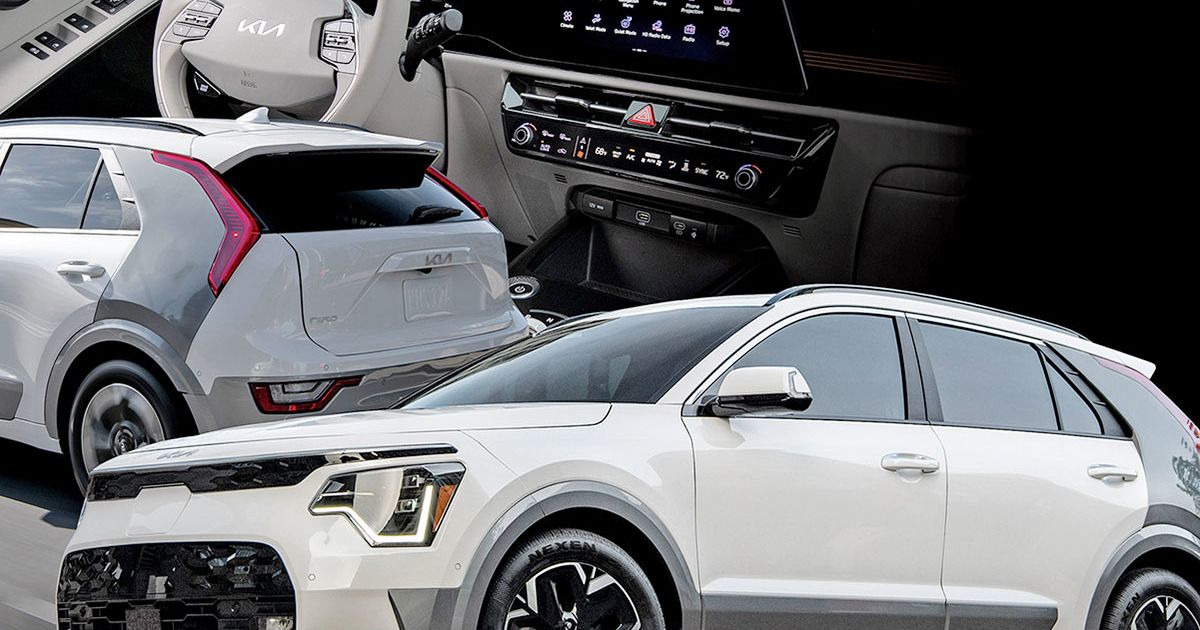
LONG BEACH, Calif. — Kia is committed to launching a battery electric vehicle in the U.S. every year for the rest of this decade, says its U.S. sales boss.
The Korean automaker will have eight BEVs in its lineup by 2029, which includes the EV6 compact crossover that went on sale this year, the redesigned Niro EV and the EV9 three-row SUV that it will build starting in 2023.
“Thirty percent of our sales will come from electric vehicles by the end of the decade, and we’ll get to 50 percent in the early 2030s,” said Eric Watson, Kia Motors America vice president of sales and operations, during a discussion about the company’s plans this month in Long Beach, Calif.
“We’re going to be launching these [EVs] into some of the bigger segments,” Watson said, referencing the fast-growing midsize crossover segment. Last year, U.S. sales of midsize crossovers were nearly 1.5 million, representing nearly a tenth of industry sales.
Globally, Kia has said it will introduce 14 fully electrified vehicles by 2027. That’s an increase from earlier plans to have 11 EVs by 2026.
The EV6 is spurring new confidence in the EV opportunity. The model delivered 10,000 sales in its four months on the market, which “exceeded our initial expectations,” Watson said.
Through May, Kia’s EV sales accounted for 6 percent of the brand’s total sales volume, according to the company. That figure includes sales of the current-generation Niro EV.
That performance tracks industry sales, which saw EVs delivering 5.4 percent of total new-vehicle sales during the same period.
During the first five months of last year, EVs accounted for 3.8 percent of total sales. Both figures are according to data from Motor Intelligence.
“In the next few years, we’re going to see a rapid doubling of EV sales to consumers,” Watson predicted, noting that much of the growth will come from additional products “in all shapes and sizes.”
“For a number of years, the majority of EVs have been smaller-segment vehicles meant for commuting, and the expansion of EVs is really going to happen as we and other automakers enter into the bigger segments, such as larger SUVs and trucks,” he said.
Russell Wager, Kia’s chief marketing officer, told Automotive News that new electric trucks such as Ford’s F-150 Lightning will help move the needle in Midwestern markets and other central regions that have been slower to adopt.
Kia’s EV9 will be a rarity in offering a three-row crossover as an alternative to Tesla’s Model X, which starts at more than $100,000.
Wager says the EV9 will be a game changer in terms of accessibility for families since it is similarly sized to the Telluride, which has been a hit for the brand.
“The EV9 will open up opportunity for those that need the size of the vehicle, whether it be for hauling kids, going into Costco and loading up all your groceries on a big weekend trip or towing the boat,” Watson said.
Watson predicts it will draw buyers away from the full-size SUV segment because of its skateboard architecture, which allows a flat floor giving “the interior space a bigger feel.”
Until the industry delivers more electric vehicle options, EV sales volume will likely remain centered in Calfornia and more urban markets on both coasts. Over the past year, more than a third of Kia’s EV sales originated on the West Coast, according to the automaker.
“The center of the country is about three to five years behind the rest of country,” said Watson.
But even when more widespread adoption occurs, the market still won’t be free of hurdles. Watson believes EV growth for the industry will hit a plateau in the middle of the decade, when there will be an “expansion of EVs for mobility solutions for commercial vehicles.
“Why it’s going to take us till the early 2030s to get to 50 percent and beyond is the building of the charging infrastructure, which will take both public and private partnerships,” Watson said.
“And by 2030, there will be more solutions and opportunities for people living in apartments and multiunit buildings or who park on the streets and in the cities.”